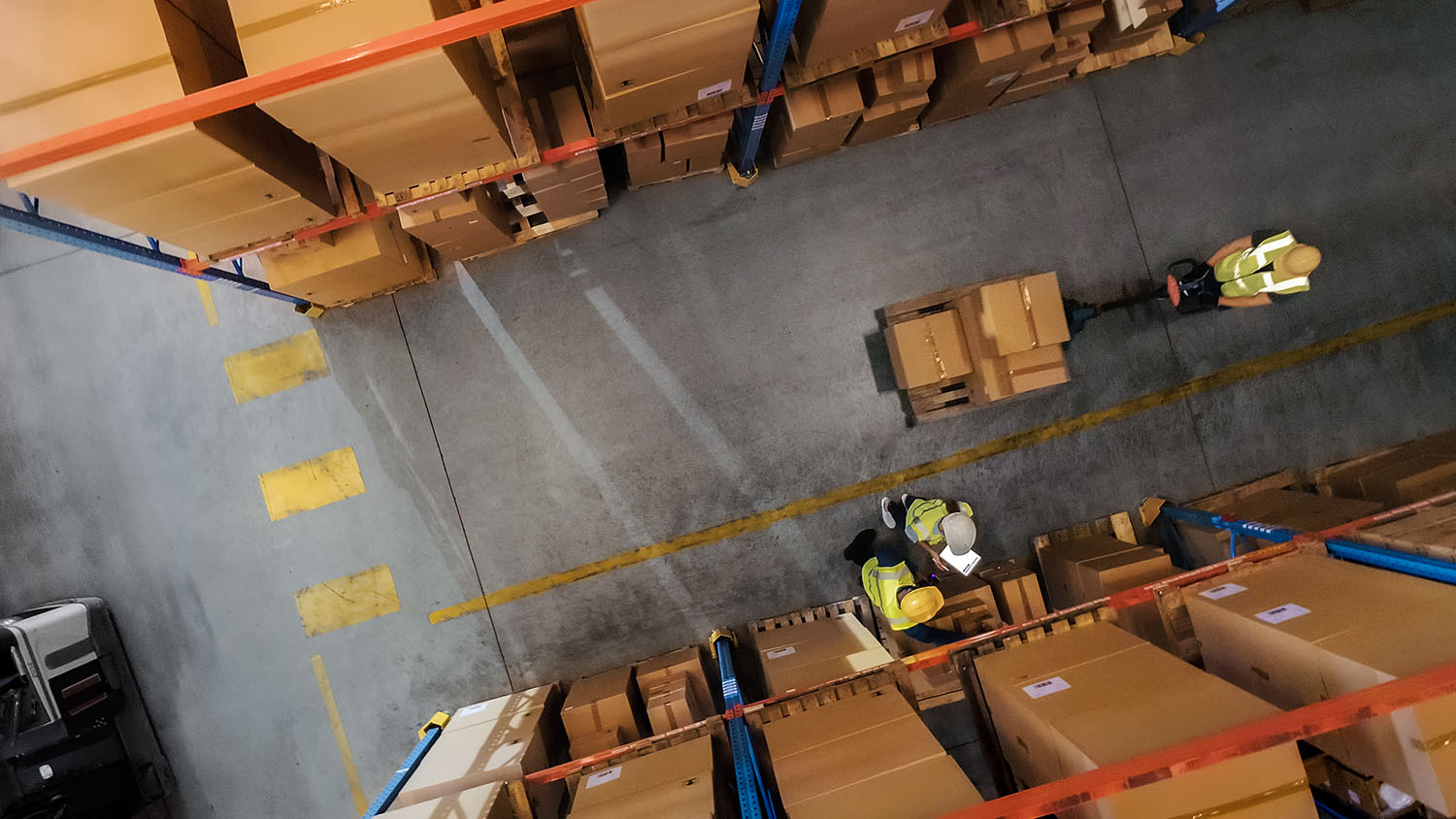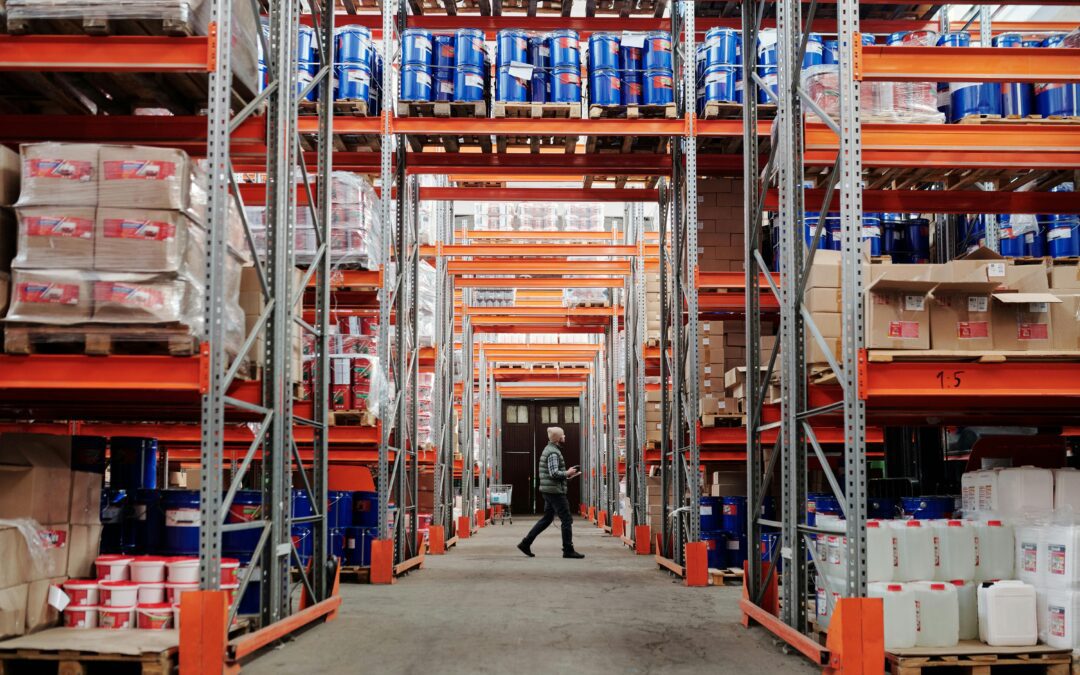A 3PL warehouse management system (WMS) is a specialized software designed to help third-party logistics providers manage inventory, streamline operations and meet ever-growing client needs.
And with global e-commerce sales projected to surpass $8 trillion by 2028, 3PL providers are turning to advanced warehouse management systems (WMS) to handle increasingly complex supply chains and meet rising customer expectations for speed and accuracy.
In this article, we’ll discuss the benefits of 3PL WMS software, its key features and its best practices. We’ll also show you how to choose the right 3PL warehouse management system for your business.
Let’s get to it.
Benefits of Implementing a 3PL Warehouse Management System
A warehouse management system isn’t just another tech investment; it’s a necessity for scaling operations and delighting customers.
Here are the benefits of implementing a 3PL Warehouse Management System:
1. Reduces Cost
Here’s the deal with warehouse costs—they can eat into your margins fast. A 3PL WMS slashes expenses across three critical areas:
- Labor Costs: Labor constitutes a significant portion of warehouse operating expenses. In fact, 50% to 70% of a company’s warehousing budget is spent on this. A WMS can significantly reduce these labor costs as you automate processes.
- Inventory Holding Costs: Efficient inventory management through a WMS minimizes excess stock and prevents stockouts. You save on storage space, insurance and capital tied up in unsold goods.
- Shipping and Transportation Costs: A WMS helps optimize order consolidation, route planning and shipping schedules, saving you money on transportation costs while maintaining timely deliveries.
These cost-saving opportunities enable businesses to allocate resources more effectively and remain competitive in an increasingly demanding market.
2. Improves Inventory Accuracy and Visibility
Gone are the days of “roughly accurate” inventory counts.
Modern WMS solutions can boost inventory accuracy from 63% to 95% or higher! Think real-time tracking, automated cycle counts and instant stock alerts.
And the best part? You’ll always know exactly what you have, where it is and where it needs to go next—no order delays whatsoever.
3. Boosts Operational Efficiency
Your warehouse needs to move like clockwork. A 3PL warehouse management system transforms your operation by automating time-draining manual tasks and strategically organizing your warehouse space.
Fast-moving products get prime locations, picking routes become shorter and your team spends less time zigzagging across the floor.
With a WMS’s intelligent task automation and smart space utilization, your warehouse staff can focus on what matters most: getting more orders out the door, accurately and on time.
4. Enhances Customer Experience
A 3PL WMS delivers what matters most to your customers: real-time tracking, faster deliveries and perfect order accuracy.
And nailing these basics isn’t just good service—it’s how you build lasting customer relationships.
5. Takes Advantage of Industry Expertise
Why start from scratch when you can tap into proven success?
Modern WMS solutions pack years of industry best practices into their DNA. So, you’re not just getting software—you’re getting a blueprint for warehouse excellence built on data from hundreds of successful operations.
Plus, regular updates mean you’re always running on the latest and greatest logistics innovations.
Now that you know the benefits of a 3PL WMS, let’s look at the features that make it so powerful.
Key Features of a 3PL WMS (and How They Work)
Here are the essential features that power modern 3PL warehouse operations and how they work.
1. Advanced Multi-Client Management
A 3PL WMS must excel at managing multiple clients simultaneously while maintaining complete data separation and security. This allows 3PL providers to serve multiple clients with varying requirements through a single, unified system.
How It Works:
The system creates distinct virtual warehouses for each client within your physical space and enables you to manage their inventory, business rules and operations separately. This client-specific architecture extends to storage locations, picking strategies and shipping rules too.
When inventory arrives, the WMS identifies the client and assigns items to their virtual warehouse based on specific requirements.
For example, Client A’s items might go to temperature-controlled storage while Client B’s similar items go to standard racking—all while maintaining complete data separation through access controls.
2. Intelligent Order Management and Fulfillment
A 3PL warehouse management software streamlines the entire order lifecycle across multiple sales channels and clients. It automates order processing while maintaining accuracy and meeting each client’s specific requirements, from receipt through delivery.
How It Works:
The WMS validates incoming orders against inventory availability and client rules before initiating fulfillment. It then orchestrates picking, packing and shipping activities based on order priority and delivery requirements.
For example, a time-sensitive order from Client A might be prioritized for immediate picking, while Client B’s orders are batched for efficient processing later in the day.
The system automatically selects optimal shipping methods, generates necessary documentation and provides real-time status updates to both warehouse staff and clients.
3. Automated Billing and Invoicing
Tracking billable activities in a 3PL warehouse is tough especially because each client has its own unique pricing structure and service agreement. This makes manual billing highly prone to errors and delays.
You can turn this challenge into a straightforward process with a WMS by automating billing.
How It Works:
The WMS tracks billable activities using each client’s specific pricing rules. This covers storage charges based on space used, fees for special handling and costs for picking and packing services.
For example, one client might pay monthly fees based on how many pallets they store and how many orders they ship, while another pays weekly for custom packaging and rush processing.
The system captures all these details automatically and creates clear, detailed invoices that break down every charge.
4. Real-Time Inventory Control
Maintaining accurate stock levels across multiple clients and SKUs is a major challenge in 3PL operations.
A WMS eliminates inventory errors and provides real-time visibility through automated tracking and monitoring tools.
How It Works:
A warehouse management system software tracks each item from the moment it enters the warehouse until it ships out. Each movement is recorded through barcode scanning or RFID technology. This maintains up-to-the-minute accuracy of stock levels and locations.
For example, when products arrive, the WMS automatically updates inventory counts and assigns storage locations. When orders are picked, stock levels adjust instantly and the system can trigger automatic reorder alerts when inventory drops below set thresholds.
5. Seamless Client Onboarding
The speed and efficiency of client onboarding directly impacts business growth and client satisfaction. A WMS transforms this critical process by enabling quick account setup, data migration and system access so that new clients can start operations as quickly as possible.
How It Works:
The system streamlines client setup through automated workflows and data integration tools. New clients receive immediate access to their dedicated portal, where they can monitor operations and track inventory in real time.
Client data flows into the system either through direct CSV uploads or automated integration with their existing platforms.
For example, when a new client comes on board, the WMS automatically sets up its inventory tracking, order management and reporting dashboards. This means clients can view their operations, track shipments and manage inventory levels from day one—significantly reducing the traditional onboarding timeline.
6. Smart Reporting and Analysis
Running a 3PL operation without clear visibility into performance metrics leads to missed opportunities and inefficiencies. A WMS provides detailed analytics that help identify trends, optimize operations and make data-driven decisions.
How It Works:
The system automatically collects and analyzes data from every warehouse activity, generating insights through customizable dashboards and reports. Managers can track KPIs across inventory, labor, shipping and client performance metrics.
For example, the system might highlight that Client A’s orders spike every Tuesday, allowing you to adjust staffing accordingly. Or it could show that certain picking routes consistently take longer than others so you can optimize your warehouse layout to improve efficiency.
7. Returns Management
Processing returns efficiently while maintaining accurate inventory records presents unique challenges for 3PL providers. A WMS streamlines the entire returns process through automated workflows and clear tracking systems.
How It Works:
The system guides warehouse staff through client-specific return procedures, from initial receipt through final disposition. Each returned item is scanned, inspected and processed according to predetermined rules.
For example, when a return arrives, the system automatically identifies the original order and applies the client’s specific inspection criteria. Based on the item’s condition, it then directs staff to either return it to inventory, quarantine it for client review or dispose of it—all while maintaining detailed documentation.
8. Integration Capabilities
Managing data flow between multiple systems and clients creates significant complexity for 3PL operations. A WMS simplifies this through pre-built integrations with essential business platforms.
How It Works:
A WMS connects directly with e-commerce platforms (like Shopify or Magento), marketplace channels (such as Amazon, eBay, or Walmart Marketplace), shipping carriers (like FedEx or UPS) and enterprise systems (such as ERP solutions like SAP or Oracle) through APIs and EDI integrations.
This enables automatic synchronization of orders, inventory levels and shipping information across all platforms.
For example, when a customer places an order on a client’s Shopify store, the WMS automatically receives it, processes it according to the client’s rules and sends tracking information back to Shopify—no manual intervention needed.
How to Choose the Right 3PL Warehouse Management System
Choosing the ideal 3PL WMS isn’t just about ticking boxes on a feature list. It’s about looking years into the future to find a system that can handle your current operational requirements but also solve the most pressing challenges you’ll face as your warehouses grow and the 3PL industry changes
Here are the key factors to consider when evaluating your next warehouse management system:
1. Assess Your Operational Requirements
The first step in selecting a WMS is understanding your warehouse’s complexity.
Many 3PL providers make the costly mistake of choosing WMSs based solely on current needs, only to find themselves saying “no” to new business opportunities months later. This limitation often stems from basic systems that can’t handle diverse product types or complex client requirements.
Da Vinci stands out by handling everything from helicopter parts to perishable goods, from complex kitting operations to specialized storage requirements. This flexibility means you never have to turn away business due to technology constraints.
When a potential client asks if you can handle their unique requirements, you can confidently say yes.
2. Evaluate Implementation and Support Models
Implementation success directly impacts your ROI, yet many providers treat it as an afterthought.
Some offer basic setup with minimal guidance, leaving your team to figure out complex configurations alone. Others require lengthy, expensive implementations that can stretch 12-18 months before you see any value.
Da Vinci takes a different approach. It combines thorough onboarding with practical training that empowers your team. This isn’t just about getting the system running—it’s about mastering it.
With Da Vinci’s industry-leading support response times of 13.5 minutes and resolution times of 4.5 hours, you’re never left waiting when issues arise.
3. Consider Long-term Cost Impact
Traditional Tier 1 solutions often demand investments of $500,000 to $1.5 million upfront, followed by expensive customizations and upgrade cycles.
Da Vinci delivers 90% of Tier 1 capabilities at a fraction of the cost through intelligent configuration. As a true cloud-native solution, you receive automatic updates and new features without additional investment. No surprise development costs and technology debt.
4. Prioritize System Flexibility
Your WMS should adapt to your business, not the other way around. While many vendors promise “customization,” they often require expensive development projects that lock you into specific versions and create upgrade challenges.
Da Vinci empowers your team through extensive self-service capabilities that allow a 3PL to onboard new clients with unique requirements via simple configuration changes that handle most scenarios.
This self-sufficiency means faster client onboarding, quicker response to changing requirements and lower operational costs.
The system grows with you, ensuring you can take advantage of both hoped-for and unplanned-for opportunities without technology holding you back.
5. Verify Integration Capabilities
Integration capabilities often determine implementation success. While many systems offer basic connections, Da Vinci provides robust integration with major e-commerce platforms, ERPs and shipping carriers.
Our flexible framework handles unique client requirements without custom development so you can support new business opportunities efficiently.
3PL Warehouse Management System Best Practices
A well-implemented WMS can transform your warehouse operations, but success depends on following proven best practices:
- Align your WMS With Business Goals. Before implementation, define clear objectives. Are you focused on improving order accuracy, reducing labor costs or expanding client capacity? Use these goals to configure your WMS for optimal performance.
- Standardize Workflows. Use the WMS to enforce consistent workflows across operations. For example, create uniform picking, packing and storage processes that reduce errors and improve efficiency across your team.
- Conduct Regular Audits. Regularly evaluate WMS performance. Use system analytics to check for bottlenecks, inefficiencies or underutilized features, and refine processes based on findings.
- Prioritize Data Accuracy. Ensure data integrity by implementing strict input controls and training staff on proper data handling. Accurate data is the foundation of effective inventory and client management.
3PL Warehouse Management System FAQs
Q. What are the four types of WMS?
The four types of WMS are standalone systems, supply chain modules, integrated ERP systems, and cloud-based solutions. Each type varies in features, scalability, and integration capabilities, with cloud-based WMS being the most flexible and cost-effective for 3PL providers.
Q. What is the role of a 3PL Warehouse Management System?
A 3PL warehouse management system manages inventory, automates order processing and optimizes warehouse operations for 3PL providers. It ensures accuracy, streamlines workflows and maximizes client service by handling diverse products and needs.
Q. How can a 3PL WMS benefit a company?
A 3PL WMS improves efficiency, reduces costs, enhances inventory accuracy and accelerates order fulfillment. It also supports scalability and allows businesses to grow without operational bottlenecks.
Q. What businesses should use a 3PL warehousing service?
Businesses with diverse product lines, high-volume inventory or seasonal demand spikes benefit most from 3PL services. Industries like e-commerce, retail, apparel and manufacturing often rely on 3PLs to manage logistics and reduce operational overhead.
Streamline Your Workflow with Da Vinci’s 3PL WMS
Running a 3PL warehouse is a complex and demanding operation.
Managing several clients with unique requirements, coordinating diverse product types and meeting tight delivery timelines can be overwhelming, but with the right warehouse management system, it doesn’t have to be.
The seamless multi-client management and scalable configurability of Da Vinci Unified’s 3PL WMS simplify (and improve) warehouse efficiency and control costs so you can grow without limits.
Request a demo of Da Vinci Unified today to see it in action. See how it can transform your operations and give you everything you need to stay ahead of the competition.



